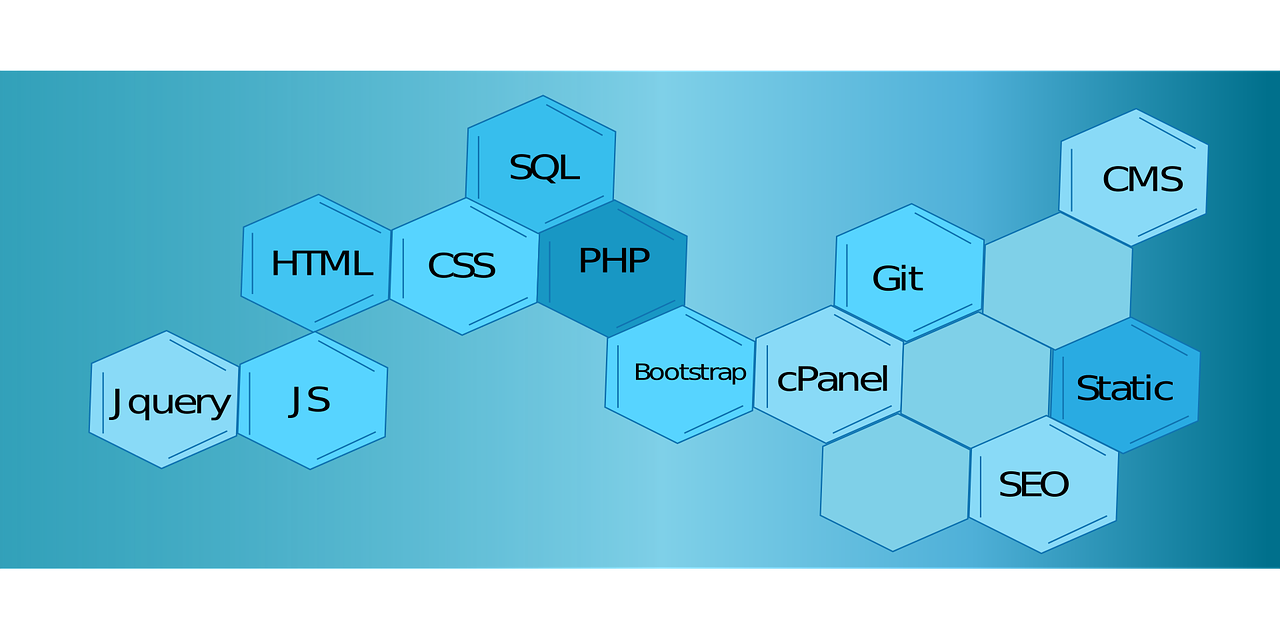In the dynamic landscape of entrepreneurship in 2025, launching a business from scratch remains a blend of creativity, strategy, and resilience. Turning an initial idea into a thriving, scalable business involves more than just passion; it requires a deep understanding of market needs, solid validation, and strategic financial planning. With approximately 430,000 new business registrations each month in the United States alone during 2024, the market is vibrant yet fiercely competitive. Entrepreneurs are not just dreaming—they are crafting solutions that address real-world problems, leveraging digital platforms like Kickstarter, Shopify, and tools such as Trello and Squarespace to build and manage their ventures. As StartupNation and Entrepreneur Magazine often highlight, the journey from concept to launch demands navigating legal frameworks, securing funding, and fostering lasting customer relationships. This article explores the essential steps entrepreneurs must take to transform raw ideas into successful enterprises while avoiding common pitfalls and capitalizing on resources like Stripe Atlas to accelerate growth.
Validating Your Business Idea: From Concept to Market Demand
Every successful business originates from a strong, validated idea that addresses a genuine problem. A crucial first step is pinpointing the issue your product or service intends to solve. This inquiry involves engaging directly with your potential customers to understand their pain points fully. For example, if your idea is an app to help busy parents manage their children’s schedules, you would reach out to parents, asking questions like: “What challenges do you face in organizing your family’s calendar?” or “What solutions have you tried, and what limitations have you experienced?” This approach ensures your offering aligns with real needs, increasing its relevance and appeal.
Next, create a basic version or prototype of your product to demonstrate core functionalities without excessive investment. Dropbox’s early strategy exemplifies this: they produced a simple, explanatory video showcasing their file-sharing solution instead of a fully built product, which effectively gauged market interest. Using no-code platforms or mockup tools, you can swiftly build a proof of concept that potential users can interact with.
Testing your minimum viable product (MVP) directly with users through prelaunch campaigns provides vital insights. Setting up landing pages where users can pre-register, place preorders, or join waiting lists allows you to measure genuine interest. For instance, achieving a click-through rate above 2% on advertisements can signal strong demand. This phase also involves analyzing competitors to identify gaps or weaknesses in their offerings. By reading customer reviews, particularly negative feedback, and deploying tools such as Similarweb or Ahrefs, you can discover where your idea might better capture the market.
Early pricing experiments are equally critical. Conducting A/B testing on various price points or surveying prospective customers about their willingness to pay uncovers the optimal price strategy. A startup launching a newsletter might compare engagement metrics between $5 and $10 subscription plans to find the sweet spot that balances affordability with profitability.
Moreover, observe behavioral data closely. Customer retention rates, referrals, and engagement levels provide cues beyond verbal feedback. Are users returning after their first interaction? Do they recommend your product to others? If not, it’s essential to dig deeper. Use iterative cycles of feedback collection and product refinement to enhance fit and appeal. Detect warning signs early, such as enthusiasm paired with reluctance to pay or lack of candid user input, which often precede struggles in product-market fit.
- Identify the core problem your idea addresses through direct customer interviews.
- Create an MVP using no-code tools or simple prototypes.
- Launch preorders or waiting lists to measure interest.
- Analyze competitors’ strengths and weaknesses.
- Test pricing strategies through surveys and A/B testing.
- Monitor user engagement and adapt continuously based on behavior.
| Validation Step | Purpose | Tools/Examples |
|---|---|---|
| Problem Identification | Ensure relevance to real needs | Customer interviews, surveys |
| MVP Creation | Demonstrate concept feasibly | No-code platforms, prototype tools |
| Prelaunch Testing | Measure market interest | Landing pages, ad campaigns |
| Competitive Analysis | Understand market gaps | Similarweb, Ahrefs, customer reviews |
| Pricing Tests | Optimize revenue potential | Surveys, A/B testing |
| User Behavior | Reveal adoption likelihood | Analytics, retention metrics |

For more insightful strategies on refining your idea and developing a resilient business model, visit Atworks Online About.
Financial Strategies to Fund Your Startup from Scratch
Choosing the right financial strategy is pivotal in transforming your validated business idea into a tangible enterprise. The funding path depends on numerous factors—the scale of your idea, your geographic location, and how much capital you require. Across the board, several prominent funding avenues are available:
- Bootstrapping: The most straightforward approach entails leveraging your own savings and resources. This retains full ownership and limits debt, but investment capacity is naturally constrained to personal means. Starting lean calibrates risk management and flexibility.
- Friends and Family Investment: Close circles often provide early financial support under clear, documented terms to mitigate relational risks. Transparency about whether contributions are loans, gifts, or equity investments is essential.
- Crowdfunding Platforms: Kickstarter and Indiegogo are prominent tools enabling entrepreneurs to validate demand while raising funds by offering rewards or early access. Success hinges on compelling storytelling and active promotion to secure backers.
- Small Business Loans: For those with a robust plan and some initial traction, loans from banks, online lenders, or government programs such as the Small Business Administration are viable. Loans retain equity but require disciplined repayment.
- Angel Investors: These individuals invest personal funds in exchange for equity and often bring valuable guidance. Platforms like AngelList facilitate connection, but shared control requires aligning goals carefully.
- Venture Capital: Suitable for startups with high growth potential, venture capitalists provide significant funding in return for equity and strategic influence, expecting rapid scale and profitability.
- Grants and Business Competitions: Though competitive and often requiring compliance with specific conditions, grants offer non-dilutive funding supporting innovation, especially in niche sectors.
- Pre-Selling Products: For product-based ventures, taking preorders through Shopify or your own website generates upfront cash flow and market validation simultaneously.
- Strategic Partnerships: Aligning with a business that benefits mutually from your success can provide both financial and operational support.
- Revenue-Based Financing: This emerging model offers capital repayable as a percentage of your revenues, helpful for steady-performing businesses seeking flexible repayment.
Each method has its pros and cons regarding control, risk, and growth potential. The choice often involves deciding between bootstrapping advantages and external investments’ accelerated scaling benefits, a topic expertly detailed at Bootstrapping vs Seeking Investors.
| Funding Source | Ownership Impact | Risk Level | Typical Use Case |
|---|---|---|---|
| Bootstrapping | Full ownership | Low to moderate | Small-scale, early-stage ventures |
| Friends and Family | Varies | Moderate | Seed funding with clear agreements |
| Crowdfunding | None | Moderate | Product launches, market testing |
| Small Business Loans | None | Moderate to high | Established plans needing capital |
| Angel Investors | Equity shared | Moderate | Early-stage with growth potential |
| Venture Capital | Equity shared | High | High-growth scalable startups |
| Grants | None | Low | Specific sectors, innovation |

Leaders in startup ecosystems like Y Combinator and Techstars often emphasize meticulous financial planning combined with flexible funding paths to maximize longevity. Discover more financial wisdom at Atworks Online Services.
Navigating Legal Requirements: Ensuring Compliance and Protection
Understanding and adhering to legal obligations form the backbone of a stable business foundation. Compliance protects your enterprise, your assets, and your reputation from costly disruptions. Here’s a breakdown of critical legal areas to manage:
Choosing Your Business Structure
The selected legal structure affects taxation, liability, and administrative burden. Common options include:
- Sole Proprietorship: Simple to establish but with unlimited personal liability.
- Limited Liability Company (LLC): Provides personal asset protection ideal for small to medium enterprises.
- Corporation (C Corp or S Corp): Suitable for businesses planning to attract investments, issue shares, and grow significantly but with increased formalities.
The decision should consider long-term goals, risk tolerance, and tax implications.
Registration and Permits
Registration typically involves:
- Naming your business and ensuring name availability.
- Obtaining a tax identification number such as an EIN in the U.S.
- Securing industry-specific licenses and permits (e.g., food handling, retail sales).
These steps legitimize operations and enable access to banking, funding, and tax benefits.
Protecting Intellectual Property
Unique brand elements, inventions, or creative works should be legally safeguarded through:
- Trademarks for brands, logos, and slogans.
- Patents for inventions and unique product designs.
- Copyrights protecting original creative content.
Protection prevents unauthorized use and preserves brand value.
Tax and Employment Laws
Stay abreast of tax liabilities such as sales tax, income tax, and social security contributions. Hiring employees necessitates compliance with labor regulations covering wages, workplace safety, non-discrimination, and benefits.
Contracts and Insurance
Draft clear contracts—client agreements, partnerships, and supplier terms—to avoid disputes. Additionally, securing adequate insurance, including general liability, professional liability, and product liability, mitigates risks inherent to your business activities.
| Legal Requirement | Purpose | Examples/Notes |
|---|---|---|
| Business Structure | Defines liability and tax obligations | LLC, Sole Proprietorship, Corporation |
| Registration | Officially recognize business | Name registration, EIN |
| Licenses & Permits | Authorize operations legally | Food permits, sales tax licenses |
| Intellectual Property | Protect brand and creations | Trademarks, patents, copyrights |
| Tax & Labor Compliance | Ensure lawful financial and HR practices | Sales tax, minimum wage laws |
| Contracts | Avoid disputes and clarify roles | Client, partnership, supplier contracts |
| Insurance | Mitigate business risks | Liability, professional, product insurance |

Experts from platforms like WeWork and General Assembly emphasize consulting with legal professionals for tailored advice that aligns with your business’s unique context. For deep dives into brand positioning and legal structuring, check resources at Atworks Online Brand Story.
Common Pitfalls When Building a Business from an Idea
Launching a startup is an inspiring venture, but navigating through potential hazards is crucial to avoid derailment. Recognizing common pitfalls equips entrepreneurs with foresight and strategic agility:
- Focusing on the Idea Instead of the Problem: Prioritize the problem your business solves rather than the allure of the idea itself. Genuine market needs should guide development.
- Skipping Thorough Market Research: Overlooking competitors and customer preferences can lead to launching a product no one wants.
- Unclear Value Proposition: Articulating what differentiates your product is essential for attracting and retaining customers.
- Attempting to Do Everything Simultaneously: Concentrate on a minimum viable product targeting a well-defined audience before scaling features or market segments.
- Underestimating Costs: Inadequate budgeting leads to cash flow crises, a common cause of startup failure.
- Ignoring Legal and Administrative Duties: Delays in registration, necessary permits, or IP protection can cause legal and operational setbacks.
- Improper Pricing Strategies: Setting prices too high or low negatively affects customer acquisition or profitability.
- Neglecting Customer Relationships: Successful products require engaged customers; investing in community building and feedback loops pays dividends.
- Underappreciating Marketing Needs: Marketing sustains visibility and growth; plan budgets and tactics accordingly.
- Setting Unrealistic Expectations: Success often takes time; measured, iterative growth beats premature scaling.
- Trying to Manage Everything Alone: Delegation and external expertise boost efficiency and reduce burnout.
- Ignoring Feedback: Open channels for critiques and improvements to refine your product continuously.
Awareness and strategic planning around these hazards increase the probability of steering your startup toward sustainable success. For more on habits that empower entrepreneurs, visit Habits of Successful Entrepreneurs.
How Stripe Services and Stripe Atlas Simplify Startup Launches
Stripe has become a cornerstone in the entrepreneurship ecosystem by streamlining payment and operational processes critical for new businesses. Whether you are launching a SaaS platform, marketplace, or e-commerce store, Stripe offers comprehensive solutions that adapt as your business grows:
- Instant Payment Acceptance: Stripe enables immediate processing of major credit cards, debit cards, and local payment methods around the globe. Multi-currency support facilitates international sales with seamless conversion and compliance.
- Subscription and Recurring Revenue Management: For businesses reliant on ongoing payments, Stripe automates billing, upgrades, downgrades, and cancellations while providing crucial analytics on churn rates and monthly recurring revenue.
- Ready-to-use Payment Pages: Avoid creating complex checkout flows by leveraging Stripe’s prebuilt payment pages that adapt languages and currencies according to user location, enhancing conversion rates.
- Marketplace and Platform Payments: Stripe Connect simplifies onboarding sellers, automates payout splits, and ensures regulatory compliance—an invaluable tool for marketplaces and multi-vendor platforms.
- Robust Fraud Protection: With Stripe Radar’s AI-driven tools, startups can mitigate fraud risks with adaptive, customizable rules tailored to evolving threats.
- Scalability with Custom APIs: As your business evolves, Stripe’s APIs empower developers to tailor payment flows, reporting, and complex configurations, ensuring operational flexibility.
- Automatic Tax Calculation and Compliance: Stripe Tax calculates the correct sales tax based on customer location and maintains up-to-date compliance, a relief for entrepreneurs selling across jurisdictions.
To accelerate business formation and compliance, Stripe Atlas offers a streamlined incorporation service enabling entrepreneurs worldwide to establish a U.S. entity, open bank accounts, and commence payment processing within days. More than 75,000 startups have leveraged Atlas, including those backed by prestigious investors like Y Combinator and General Catalyst.
Steps such as electronic document signing, immediate company name availability checks, and founder equity allocation simplify the legal groundwork. Atlas also facilitates early banking activities before the Employer Identification Number arrives and supports intellectual property equity transactions.
Atlas users are granted a free year of Stripe Payments processing and partner credits from renowned industry players like AWS and Carta. This comprehensive package enables founders to focus on scaling effectively, turning raw ideas into operational businesses quickly and confidently. Discover more about Stripe’s ecosystem designed for entrepreneurs at Atworks Online.
| Feature | Details |
|---|
Frequently Asked Questions about Launching Your Business
How can I effectively validate my business idea before launching?
Engage with your target audience directly to understand their problems, create a minimum viable product, and measure interest through prelaunch campaigns or landing pages. Utilize tools for competitive analysis and test pricing early to gauge willingness to pay.
What are the main funding options for startups, and how do I choose?
Options range from self-funding and family investment to crowdfunding, angel investors, and venture capital. Your choice depends on business scale, growth ambitions, and willingness to share equity. Bootstrapping maintains control but limits funds; investors provide capital but share ownership.
What legal steps must I prioritize when starting my business?
Selecting a suitable legal structure, registering the business, obtaining necessary permits, protecting intellectual property, and complying with tax and employment laws are essential to ensure smooth operation and minimize risk.
What common mistakes should I avoid as a new entrepreneur?
Focus on solving a real problem, perform thorough market research, clarify your value proposition, manage scope, budget realistically, engage customers, and prioritize legal compliance and marketing efforts. Avoid trying to do everything alone or ignoring feedback.
How does Stripe Atlas benefit startups during launch?
Stripe Atlas simplifies incorporation, banking, and payment acceptance processes, offering legal documentation and operational support to get your business running quickly. It provides valuable partner credits and tools to manage payments and compliance efficiently.


